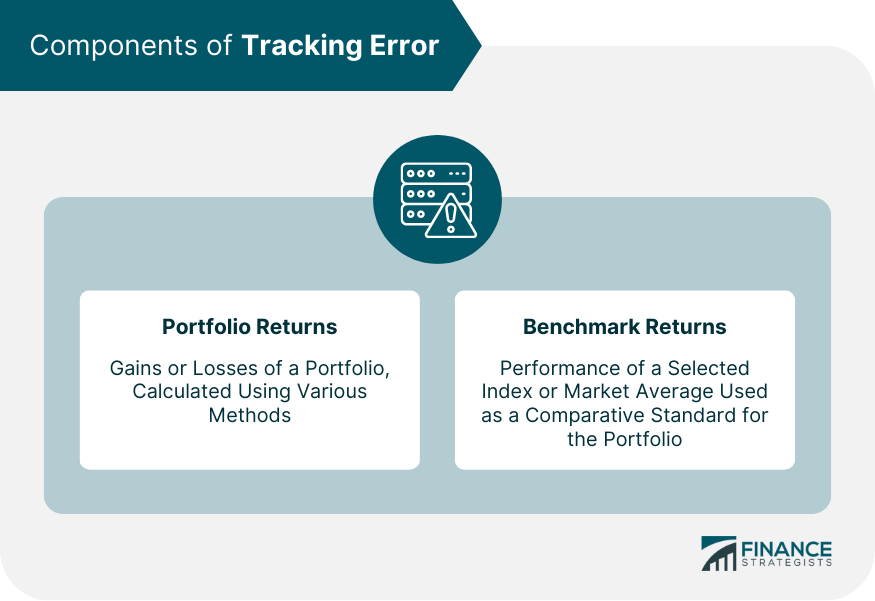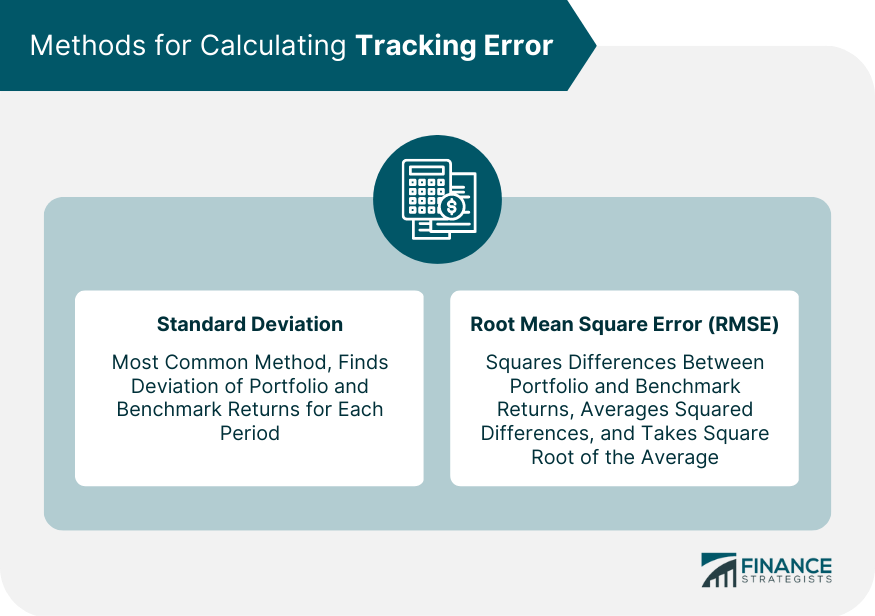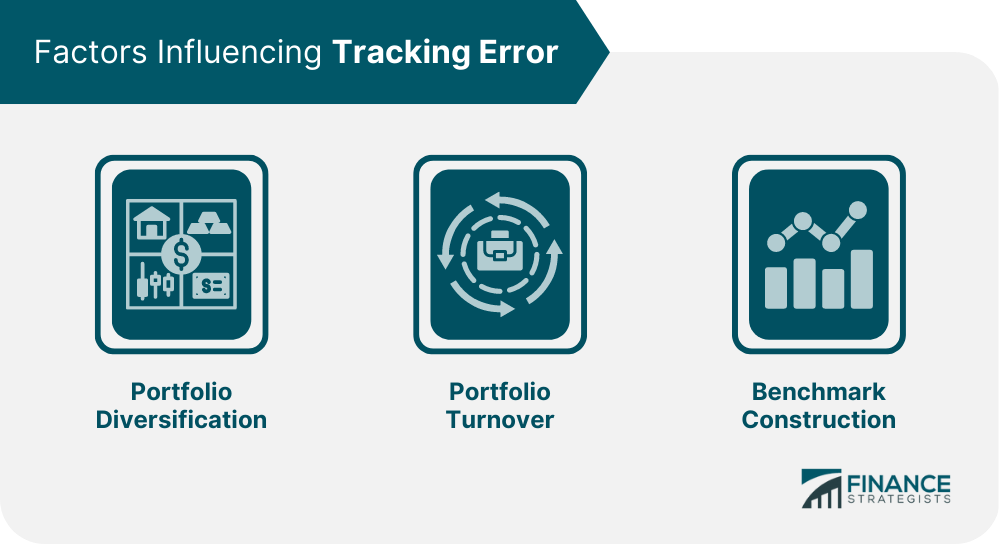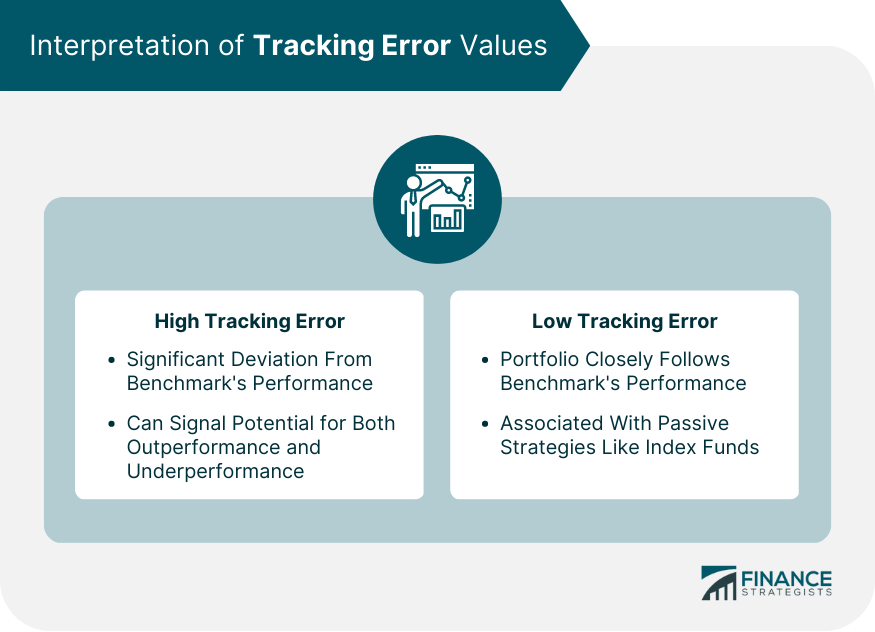Tracking error refers to the discrepancy between a portfolio's returns and a benchmark index's returns. It measures the performance of an investment portfolio or a fund manager relative to the benchmark, gauging how closely the portfolio mimics the benchmark's performance. Tracking error is a crucial metric in portfolio management, as it helps investors and fund managers assess the level of risk associated with their investment strategies. A low tracking error indicates that a portfolio closely follows the benchmark, while a high tracking error suggests a higher degree of deviation and potential for outperformance or underperformance. Investors and fund managers use tracking errors to evaluate their investment strategies' effectiveness and make informed decisions about portfolio adjustments. It assists in determining whether a portfolio's active or passive management approach aligns with the investor's risk tolerance and investment objectives. Portfolio returns are the gains or losses generated by a portfolio over a specific period. These returns can be calculated using various methods, such as the time-weighted return or the internal rate of return. Benchmark returns represent the performance of a selected index or market average that serves as a comparative standard for the portfolio. The chosen benchmark should accurately reflect the portfolio's investment strategy and the targeted market segment. The most common method for calculating tracking error is finding the excess returns' standard deviation. This involves computing the difference between the portfolio's returns and the benchmark's returns for each period and then calculating the standard deviation of these differences. Another method for calculating tracking error is the RMSE. It involves squaring the differences between portfolio and benchmark returns for each period, averaging the squared differences, and taking the square root of the average. Portfolio diversification refers to allocating assets across various investment types and sectors to minimize risk. A well-diversified portfolio may exhibit lower tracking error, as the investments are less likely to deviate significantly from the benchmark. Portfolio turnover is the frequency of buying and selling securities within a portfolio. High portfolio turnover can increase tracking error, as frequent trading may result in greater deviations from the benchmark. The construction of the benchmark index can influence tracking error. If the benchmark is not representative of the portfolio's investment strategy, the tracking error may be higher due to the differences in asset allocation and sector exposure. A high tracking error indicates a significant deviation from the benchmark's performance. This may result from an active investment approach, sector-specific bets, or a higher concentration of assets. High tracking error can signal an increased potential for both outperformance and underperformance relative to the benchmark. A low tracking error suggests that a portfolio closely follows the benchmark's performance. This is often associated with passive investment strategies, such as index funds, where the objective is to replicate the benchmark's returns rather than attempting to outperform it. In active management, fund managers aim to outperform the benchmark by making strategic investment decisions. While this approach can lead to higher returns, it often results in increased tracking error due to the divergence from the benchmark's asset allocation and sector exposure. Passive management focuses on replicating the benchmark's performance by mirroring its asset allocation and sector exposure. This approach generally results in lower tracking error, as the goal is to minimize deviations from the benchmark. However, passive management may limit the potential for outperformance. The information ratio is a risk-adjusted performance metric that measures the excess return of a portfolio relative to its tracking error. A higher information ratio indicates that the portfolio has generated better risk-adjusted returns compared to the benchmark. The Sharpe ratio is another risk-adjusted performance metric that evaluates the excess return of a portfolio relative to its overall risk, as measured by the standard deviation of returns. A higher Sharpe ratio indicates that the portfolio has generated better risk-adjusted returns per unit of risk taken. Index replication involves creating a portfolio that closely mirrors the benchmark index's asset allocation and sector exposure. This approach can help minimize tracking errors by ensuring that the portfolio's performance closely tracks the benchmark. Stratified sampling is a technique in which a portfolio is constructed by selecting a representative sample of securities from each sector or asset class within the benchmark. This method can help reduce tracking error by maintaining a similar asset allocation and sector exposure to the benchmark while avoiding the need to hold every security in the index. Optimization methods, such as mean-variance optimization, seek to construct a portfolio that minimizes tracking error while maximizing returns. These techniques typically involve complex mathematical models and algorithms to identify the optimal combination of assets that will achieve the desired risk-return profile. Regularly rebalancing a portfolio ensures that its asset allocation remains in line with the benchmark and the investor's risk tolerance. Frequent rebalancing can help maintain a low tracking error by preventing asset allocation drift over time. Conducting periodic performance reviews enables investors and fund managers to assess their portfolio's tracking error and make necessary adjustments. These reviews can identify potential sources of tracking error, such as sector or asset class deviations, and inform decisions about rebalancing or changing investment strategies. Portfolio managers and investment advisors play a crucial role in minimizing tracking error. They can guide investors in selecting appropriate portfolio construction techniques, monitor portfolio performance, recommend rebalancing strategies, and provide insights on managing tracking error in alignment with the investor's objectives and risk tolerance. Managing tracking error in portfolio management involves several best practices to optimize investment performance while minimizing deviations from the benchmark. These practices include selecting appropriate portfolio construction techniques, monitoring and adjusting portfolio holdings, conducting periodic performance reviews, and engaging portfolio managers and investment advisors to provide guidance and insights. Rebalancing the portfolio regularly and using stratified sampling or optimization methods can also help minimize tracking error. Additionally, carefully selecting the benchmark index and ensuring that it accurately reflects the portfolio's investment strategy can help reduce tracking error. By following these best practices, investors and fund managers can effectively manage tracking error to achieve their investment objectives while minimizing risk. Understanding tracking error is essential for investors and fund managers evaluating and managing their portfolio's performance relative to a benchmark. By calculating tracking error and interpreting their implications, investors can make informed decisions about their investment strategies and strike the right balance between tracking error and portfolio performance. Balancing tracking error and investment performance involves making strategic decisions about portfolio construction, rebalancing, and investment management. By implementing appropriate techniques and regularly monitoring portfolio performance, investors can minimize tracking error while maximizing the potential for outperformance. Managing tracking error effectively requires implementing best practices in portfolio construction, monitoring, and adjustments. Investors looking to effectively manage tracking error and optimize their portfolio performance should consider seeking professional wealth management services. What Is Tracking Error?
Components of Tracking Error

Portfolio Returns
Benchmark Returns
Methods for Calculating Tracking Error

Standard Deviation of Excess Returns
Root Mean Square Error (RMSE)
Factors Influencing Tracking Error

Portfolio Diversification
Portfolio Turnover
Benchmark Construction
Implications of Tracking Error
Interpretation of Tracking Error Values
High Tracking Error
Low Tracking Error

Trade-Offs Between Tracking Error and Portfolio Performance
Active Management
Passive Management
Risk-Adjusted Performance Metrics
Information Ratio
Sharpe Ratio
Minimizing Tracking Error
Portfolio Construction Techniques
Index Replication
Stratified Sampling
Optimization Methods
Monitoring and Adjusting Portfolio Holdings
Rebalancing Frequency
Periodic Performance Reviews
Role of Portfolio Managers and Investment Advisors
Best Practices for Managing Tracking Error
Final Thoughts
Tracking Error FAQs
Tracking error measures the discrepancy between a portfolio's returns and those of a benchmark index, helping investors and fund managers assess the risk associated with their investment strategies and evaluate their performance relative to the benchmark.
Tracking error can be calculated using various methods, such as the standard deviation of excess returns or the root mean square error (RMSE). Both methods involve comparing the portfolio's returns to the benchmark's returns over a specific period.
Factors that can influence tracking error include portfolio diversification, portfolio turnover, and benchmark construction. These factors can cause deviations in asset allocation, sector exposure, and investment strategies, leading to higher or lower tracking error.
Tracking error can signal the potential for outperformance or underperformance relative to the benchmark. A high tracking error may indicate a greater degree of deviation and risk, while a low tracking error suggests that the portfolio closely follows the benchmark's performance.
Best practices for managing tracking error include implementing appropriate portfolio construction techniques, conducting periodic performance reviews, rebalancing the portfolio regularly, and seeking professional wealth management services to ensure alignment with the investor's objectives and risk tolerance.
True Tamplin is a published author, public speaker, CEO of UpDigital, and founder of Finance Strategists.
True is a Certified Educator in Personal Finance (CEPF®), author of The Handy Financial Ratios Guide, a member of the Society for Advancing Business Editing and Writing, contributes to his financial education site, Finance Strategists, and has spoken to various financial communities such as the CFA Institute, as well as university students like his Alma mater, Biola University, where he received a bachelor of science in business and data analytics.
To learn more about True, visit his personal website or view his author profiles on Amazon, Nasdaq and Forbes.















